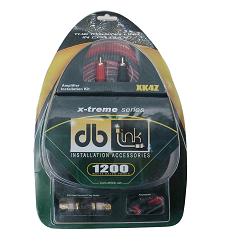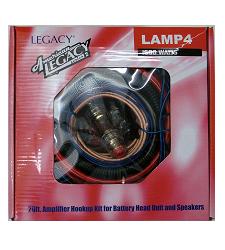Head to Head 4 Gauge Amp Kit Review

See what you are really getting from several popular, entry level 4 gauge amp kits!
Shopping online you can find many bargains, one can really save some money when shopping around. Name brand products are often sold for less online. Today however, you can not always rely on name brands in every category and what sounds like a good deal, is really just a lot of marketing hype. This is what drove me to do a complete review of the entry level amp kits found on ebay and Amazon. The kits selected ranked very high when searching for a 4 gauge amp kit and all were in the $22-30 price range. The majority of the kits listed have very vague descriptions with regard to materials used and what the true speicifcations are for the wire they contain.
What was tested and how we achieved our results:
I looked at three of the main components of each amplifier installation kit, the power wire, the speaker wire and RCA cable. Each amp kit was opened, the components were inspected, weighed and then cut apart to determine the conductor material and size. I did not test conductivity during this review. A couple years back Dave MacKinnon of Performance Auto & Sound Magazine did a head to head test of our CCA wire versus OFC wire and also included a few undersized CCA options in that test. The results of that test are available here
For each amp kit, the following test was completed for the power wire, speaker wire, and RCA cable – I measured the outside diameter of the power wire including the PVC jacket. From there, a cut was made 360 degrees around the cable 4-6″ from the end. I pulled the jacket about 1/2″ up exposing the conductor and measured the diameter of the cable’s conductor (shown below-Left). At this point, I pulled the insulation completely off the power wire and arranged the cable’s ropes into individual cores. (shown below-Right) A cable is typically made up of 7 ropes. If you know the number of strands in one rope, multiply by 7 and you will have the complete strand count. After that, I measured the diameter of one strand from within the cable. This was done several times per cable to make sure the same strand size is used throughout the cable’s construction. Taking the strand count and diameter, we are able to calculate area in square millimeters of the cable and converted those results into American Wire Gauge Standards.
The participants, listed alphabetically. Click to see how they faired:
Head to Head results of all the kits tested:
Power Wire Area and True AWG ratings
Speaker Wire Area and True AWG ratings
Head to Head results of all the kits tested:
Power Wire Area and True AWG ratings
Speaker Wire Area and True AWG ratings

Amplifier Installation Kit Volt/ Watt Rating Table:
| Manufacture | Watt Rating | Fuse Rating | Typical Voltage | Amps Required* | Volts Required @ Fuse Rating* |
|---|---|---|---|---|---|
| Bullz Audio | 2000 | 60A | 14.4 | 138.88 | 33.33 |
| DB Link PK | 1600** | 60A | 14.4 | 111.11 | 26.66 |
| DB Link XK | 1200** | 60A | 14.4 | 83.33 | 20 |
| KnuKonceptz | Not Rated*** | 80A | 14.4 | – | – |
| Lanzar | 1800 | 80A | 14.4 | 125 | 22.5 |
| Legacy | 1600 | 60A | 14.4 | 111.11 | 26.66 |
| XXX | 2500 | 80A | 14.4 | 173.6 | 31.25 |
| *Using Ohm’s Law, we calculated the “Required” amps OR voltage required to achieve the manufactures rated watt claim. **DB Link has two different watt ratings for their two kits, yet both use the same fuse size. ***KnuKonceptz does not rate amp kits or power wire by wattage. | |||||






























